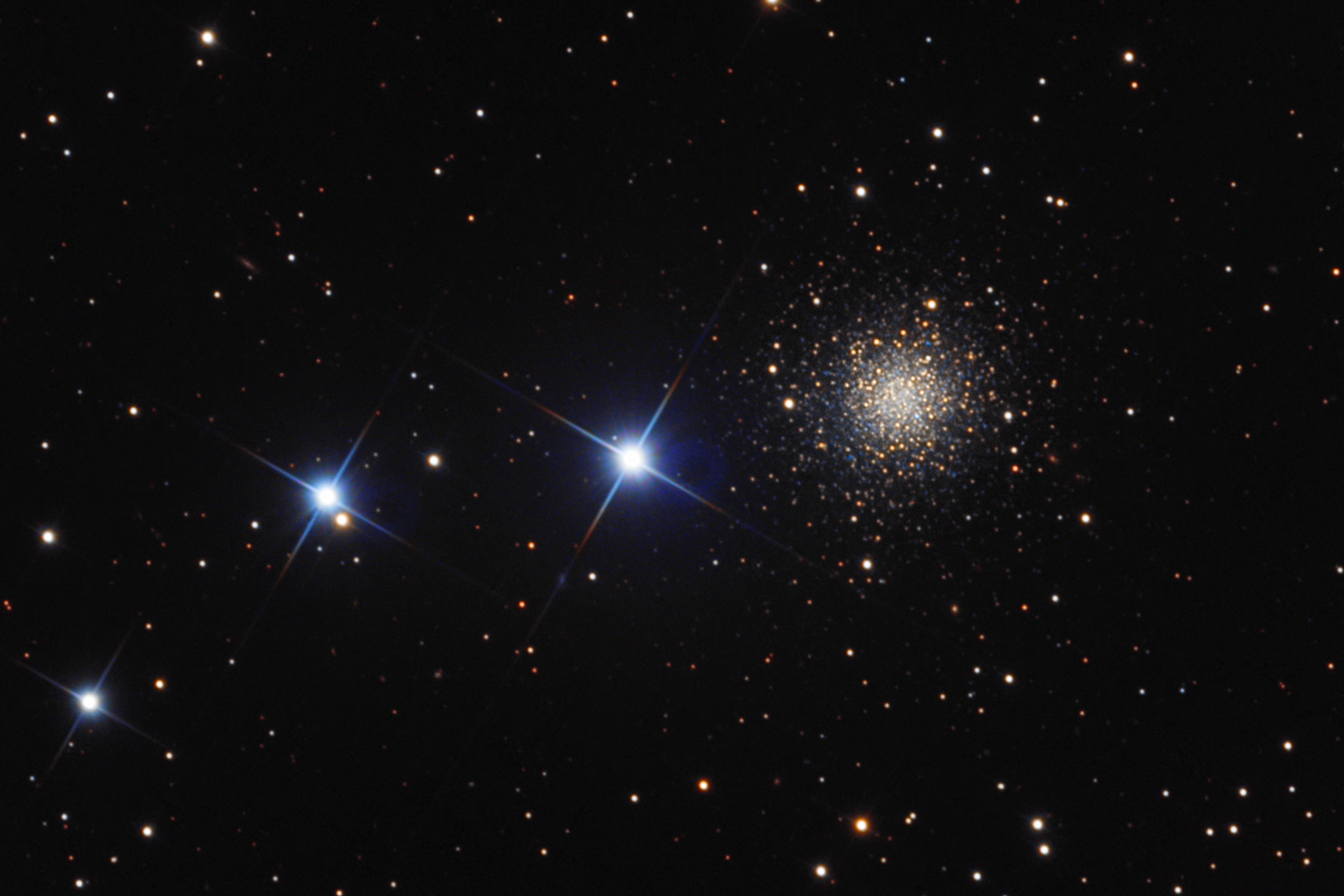
Copyright:Bob Franke
原文:
Three objects stand out in this thoughtful telescopic image, a view toward the mostly stealthy constellation Lynx. The two brightest (the spiky ones) are nearby stars. The third is the remote globular star cluster NGC 2419, at distance of nearly 300,000 light-years. NGC 2419 is sometimes called “the Intergalactic Wanderer”, an appropriate title considering that the distance to the Milky Way’s satellite galaxy, the Large Magellanic Cloud, is only about 160,000 light-years. Roughly similar to other large globular star clusters like Omega Centauri, NGC 2419 is itself intrinsically bright, but appears faint because it is so far away. NGC 2419 may really have an extragalactic origin as, for example, the remains of a small galaxy captured and disrupted by the Milky Way. But its extreme distance makes it difficult to study and compare its properties with other globular clusters that roam the halo of our Milky Way galaxy.
中文翻譯:
在這幅深思熟慮的望遠鏡影像中,有三個物體格外突出,這是指向大多數不明的星座——獵豹座。兩個最亮的(帶刺的)是附近的恆星,而第三個則是遙遠的球狀星團 NGC 2419,距離約 300,000 光年。NGC 2419 有時被稱為「星際流浪者」,這個名稱再適合不過,因為距離我們的衛星星系大麥哲倫雲只有約 160,000 光年。NGC 2419 與其他大型球狀星團如 Omega Centauri 相似,雖然它本身相當明亮,但由於距離遙遠而顯得黯淡。NGC 2419 可能真的擁有外星系的起源,比如曾經是一個小星系,然後被銀河系捕獲並打碎。但它的極端距離使得該星團的性質難以研究和與其他漫遊於我們銀河系的球狀星團進行比較。
#NGC2419 #IntergalacticWanderer #LynxConstellation #Astrophotography #AstronomyLovers #DeepSpace #GlobularClusters #MilkyWay #Stargazing #SpaceExploration
來源:NASA每日圖片


